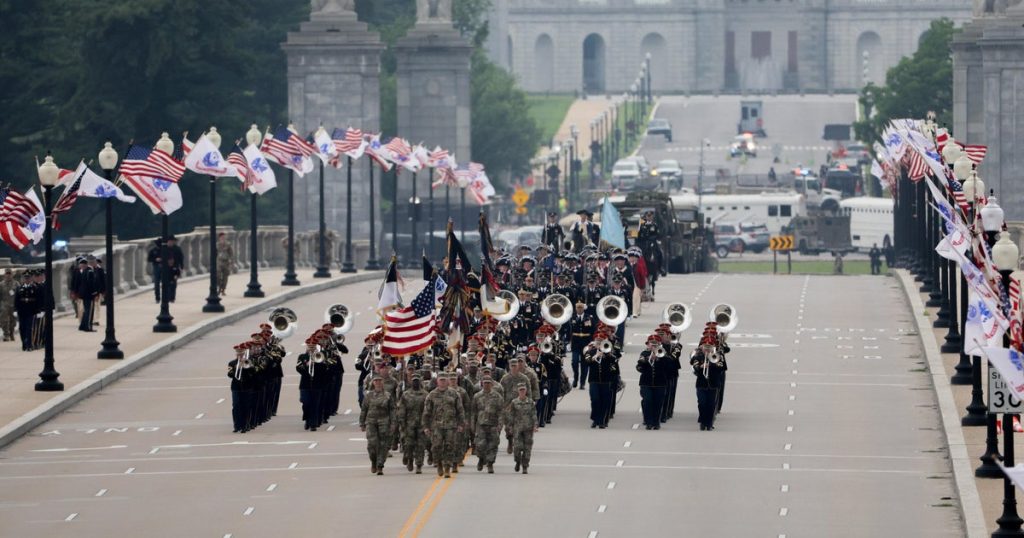On June 14, 2025, President Donald Trump proudly celebrated both his 79th birthday and the 250th anniversary of the U.S. Army with a grand military parade in Washington, D.C. The event, which featured thousands of soldiers and a significant display of military equipment, drew a large crowd along the National Mall. While supporters praised the event for paying homage to the nation’s military history, it was also met with notable protests and criticisms regarding its associated costs and optics.
| Article Subheadings |
|---|
| 1) Historical Significance of the U.S. Army |
| 2) Military Parade Highlights |
| 3) Social and Political Reactions |
| 4) Parade Logistics and Schedule |
| 5) Protests Against the Celebration |
Historical Significance of the U.S. Army
Established on June 14, 1775, the U.S. Army is a core component of the United States’ military forces and plays a vital role in protecting the nation’s interests both domestically and internationally. The Continental Army, which had George Washington as its first commander, was pivotal in the fight for independence from British rule. The history of the Army is marked by significant wars, victories, and sacrifices, shaping the nation’s identity and ideals.
The decision to commemorate this milestone via a grand parade aligns with a long-standing tradition of honoring military service and its contributions to the nation. As President Trump stated, “Every other country celebrates their victories… it’s about time America did too.” This sentiment resonates with the American public’s appreciation of the military, reflecting national pride and respect for those who serve.
Military Parade Highlights
The military parade featured a notable array of participants and displays. Approximately 6,600 soldiers participated, showcasing the variety of the Army’s divisions and capabilities. Among the military hardware presented were six M1A1 Abrams tanks, two World War II Sherman tanks, eight CH-47 helicopters, 16 UH-60 Black Hawks, and four WWII-era P-51 aircraft.
The event commenced with a ceremonial arrival of President Trump and First Lady Melania Trump, heralded by a 21-gun salute and the playing of “Hail to the Chief.” The parade itself began at 6 p.m., earlier than initially scheduled due to impending weather concerns, taking participants and spectators on a route that included significant landmarks like the Lincoln Memorial and the Washington Monument.
Social and Political Reactions
The celebration sparked a wide array of reactions, both supportive and critical. Supporters largely saw the parade as a fitting tribute to military achievements and a moment for patriotic celebration. Conversely, many critics suggested that the parade may be an excessive display and an attempt for President Trump to inflate his own public persona. Labor unions and activists also voiced their displeasure, viewing the celebration as politically motivated.
In this vein, Senator Tammy Duckworth, an Army veteran, condemned the parade as a “birthday parade” for President Trump—labeling it a misuse of military resources. Meanwhile, Senator Rand Paul voiced concerns that such displays evoke authoritarianism, saying, “Never been a big fan of goose-stepping soldiers and big tanks.” These sentiments reflect underlying tensions surrounding national displays of military power in America.
Parade Logistics and Schedule
Detailed preparations ensued in the lead-up to the parade, with logistical efforts encompassing fencing structures and the transportation of military vehicles. The event itself was meticulously scheduled, consisting of a wreath-laying ceremony at Arlington National Cemetery at 8:15 a.m., followed by various events throughout the day leading to the main parade.
On the day of the parade, events included a fitness competition from 9:30 a.m. to 12:30 p.m. on the National Mall, an Army Birthday Festival from 11 a.m. to 6 p.m., culminating with a fireworks display scheduled for 9:45 p.m. These events aimed to enhance public engagement, encouraging citizens to celebrate alongside the military.
Protests Against the Celebration
While the parade drew many crowds in support, it also became the site of protest. Activist groups organized “No Kings” rallies across the country, dissatisfied with what they perceived as the Trump administration’s authoritarian tendencies and its handling of national issues. Some demonstrations occurred near the White House as protestors aimed to divert media coverage away from the parade.
The protests highlighted the deep political divisions in the country, illustrating that not all Americans view military parades as celebratory. Instead, they see a representation of politics they oppose, leading them to gather and voice their dissent against the Trump administration.
| No. | Key Points |
|---|---|
| 1 | The parade celebrated the U.S. Army’s 250th anniversary. |
| 2 | The event included thousands of soldiers and a display of military equipment. |
| 3 | Critics raised concerns about the cost and nature of the event. |
| 4 | Protests occurred simultaneously across the country against the parade. |
| 5 | The event emphasized military traditions while igniting political debates. |
Summary
The military parade on June 14, 2025, served as both a celebration of the U.S. Army’s storied history and a contentious political event. While it offered an opportunity for patriotic expression among supporters, it also highlighted the significant divides among American citizens regarding governance and political expression. The dual nature of the celebration underscores the complexities of national pride and divisive politics in contemporary society.
Frequently Asked Questions
Question: What is the significance of the U.S. Army’s 250th anniversary?
The 250th anniversary celebrates the establishment of the U.S. Army in 1775, marking its historical role in defending the nation and contributing to its identity.
Question: What were some highlights of the military parade?
Highlights of the parade included participation from approximately 6,600 soldiers, displays of various military vehicles, and aerial demonstrations featuring helicopters and aircraft.
Question: How did the public respond to the military parade?
Public response included both celebration and protest, with some citizens expressing pride in military achievements, while others voiced criticism regarding the costs and political implications of the event.
